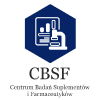Drum dryers are proven solutions for continuous, gentle, and energy-efficient drying of a wide range of materials – from biomass, sludge, and minerals to food, chemical, or pharmaceutical products. Thanks to indirect heating with saturated steam and a uniform temperature distribution, the drying process is stable and free from the risk of overheating the material.
During operation, a thin layer of product is applied to the rotating drum, which is heated from the inside. In contact with its surface, moisture evaporates within a few seconds, and the dried material in the form of flakes or powder is precisely separated by a scraping knife. This results in a homogeneous, high-quality final product, with minimal energy consumption and low dust emission.
Advantages
of Drum
Dryers:
- High thermal efficiency – steam consumption of approx. 1.3–1.5 kg per 1 kg of evaporated water.
- Continuous and fully automatic process, guaranteeing repeatability and stable quality.
- Gentle drying without excessive mechanical or thermal impact.
- Compact design with small space requirements and low operating costs.
- Capability to work with various heat sources – steam, hot gases, thermal oil.
- Options for stainless steel construction or with coatings resistant to abrasion and corrosion.
- Integrated control systems monitoring temperature, rotational speed, and humidity.
Main
Technical
Features:
1. Construction and Execution
- • Drum made of high-grade construction or stainless steel (optionally with anti-corrosion or chrome coating).
- Internal distribution blades ensuring uniform drying and heat exchange.
- Thermally insulated casing, limiting energy loss and heat emission to the environment.
- Stable support frame with a system of support rollers and a drive regulated by an inverter.
2. Operating Parameters
- Operating mode: continuous, indirect (heating with saturated steam, hot air, or thermal oil).
- Temperature range: (depending on the heating medium and type of material).
- Drying time: 2 s – 2 minutes (regulated by drum rotational speed and layer thickness).
- Drum rotational speed: 2–10 rpm (smoothly controlled).
- Throughput: from to several tons/h, depending on the model and material.
3. Product Feeding and Discharge System
- Uniform application of material onto the drum surface using application rollers or a spraying system.
- Scraping off the dried product with a scraping knife with adjustable pressure.
- Transport of the product to a cooler, mill, or packaging system.
4. Efficiency and Energy Saving
- High heat exchange efficiency – steam consumption of approx. 1.3–1.5 kg per 1 kg of evaporated water.
- Closed steam and condensate system, limiting media consumption.
- Low dust emission and no need for extensive filtration.
5. Automation and Process Control
- PLC control system with parameter visualization (temperature, humidity, drum speed).
- Capability for integration with the plant’s supervisory control system (SCADA).
- Temperature protections and level sensors to protect the product and the device.
6. Additional Options
- Single- or double-drum versions.
- Vacuum versions for drying products sensitive to high temperatures.
- Possibility of using various heat sources – gas, steam, oil, hot process gases.
- CIP (Clean-In-Place) cleaning system for the food and pharmaceutical industries.
